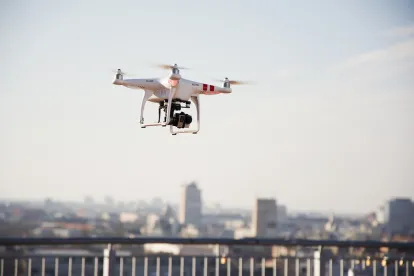While the FAA has not announced a formal policy change with regard to the commercial operation of small unmanned aircraft systems (sUAS), a review of recently approved Section 333 Exemptions indicates changes to the conditions and limitations included in most of the nearly 4,000 exemptions granted so far. These changes may create new opportunities for utilities and energy companies interested in establishing or expanding sUAS operations.
The most noteworthy change concerns the sUAS approved for use under the Exemption. In the past, a Petition for Section 333 Exemption was required to specifically identify the aircraft the applicant intended to operate and approval was granted only for that aircraft. If the applicant later wanted to add different aircraft, an amendment to the Exemption was required. In the latest Exemptions granted, the FAA states that the “operator is authorized by this grant of exemption to use any aircraft identified on the List of Approved Unmanned Aircraft Systems (UAS) under Section 333 at regulatory docket FAA-2007-3330 at www.regulations.gov, when weighing less than 55 pounds including payload.” Given that the list of approved sUAS currently includes 1,120 aircraft, this greatly expands the options available to utilities and energy companies when evaluating which drone system performs best for the intended uses.
Other changes of interest to utilities and energy companies relate to sUAS operations over and near people. Section 333 Exemptions granted to date differentiate between participating and nonparticipating persons for purposes of sUAS operating conditions. The Exemptions require sUAS operations be conducted at least 500 feet from all nonparticipating persons, vessels, vehicles, and structures unless sufficient barriers or structures exist to protect nonparticipating persons in the event of an accident, and then only with the consent of the owner of such vessels, vehicles, or structures after the sUAS pilot has assessed that the operation can be completed without undue hazard. This condition remains in the latest Exemptions granted, however, the FAA provides greater specificity as to which persons are considered to be directly participating in the sUAS operation and the operating conditions applicable to such persons. These persons are identified as the pilot-in-command, the visual observer, and other consenting personnel directly participating in the sUAS operation. The latest Exemptions also address sUAS flights near but not over persons directly participating in the intended purpose of the sUAS operation. Such persons must be briefed on the risks involved and provide consent to those risks. Additionally, the sUAS operator must provide the local FAA Flight Standards District Office notice and a Plan of Activities 72 hours prior to the intended sUAS operations. The required content of the Plan of Activities is specified in the Exemption and is consistent with the information previously required under Exemptions for closed-set motion picture and television filming. Finally, the latest Exemptions include additional operations manual requirements applicable to sUAS flights closer than 500 feet from persons directly participating in the sUAS operations.
The latest Exemptions granted also include modified language in the conditions pertaining to loss of GPS signal and loss of the command or control link with the unmanned aircraft.
It is unclear whether the changed conditions and limitations contained in the latest Section 333 Exemptions reflect a policy shift that will be broadly applied to all future Exemptions. Furthermore, it is unclear whether holders of previously granted Exemptions will be able to take advantage of these changed conditions, particularly the expanded list of approved aircraft, without applying for an amendment to their existing Section 333 Exemption. For now, these changes represent an encouraging incremental development that should allow utilities and energy companies to expand their efforts to explore and deploy sUAS throughout their operations.




 />i
/>i
